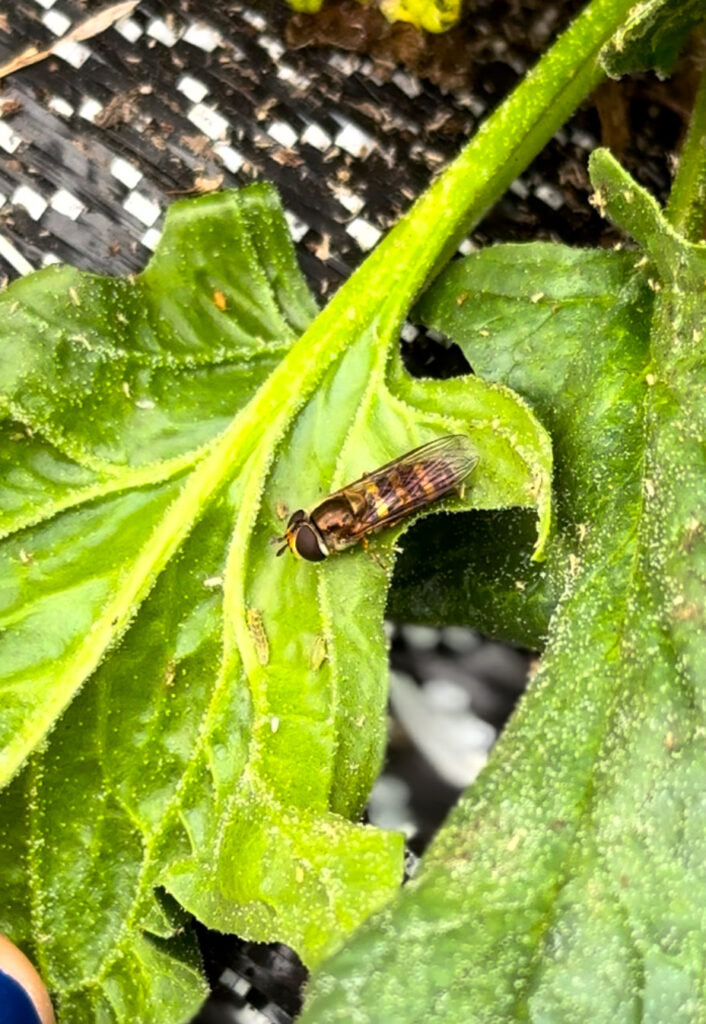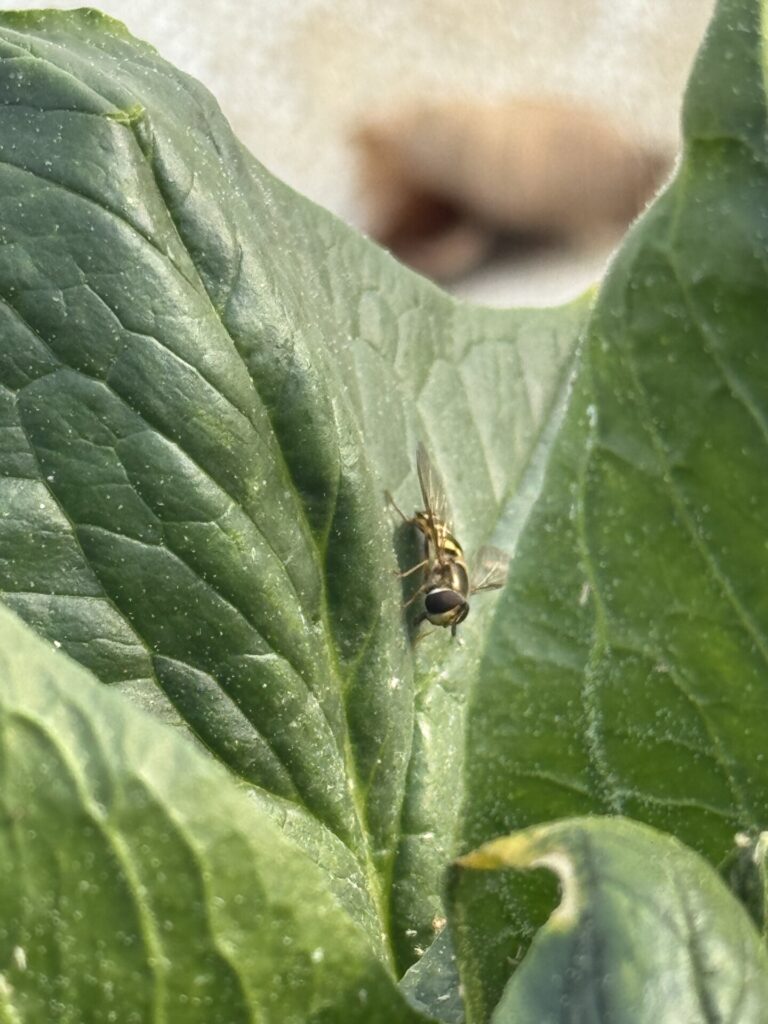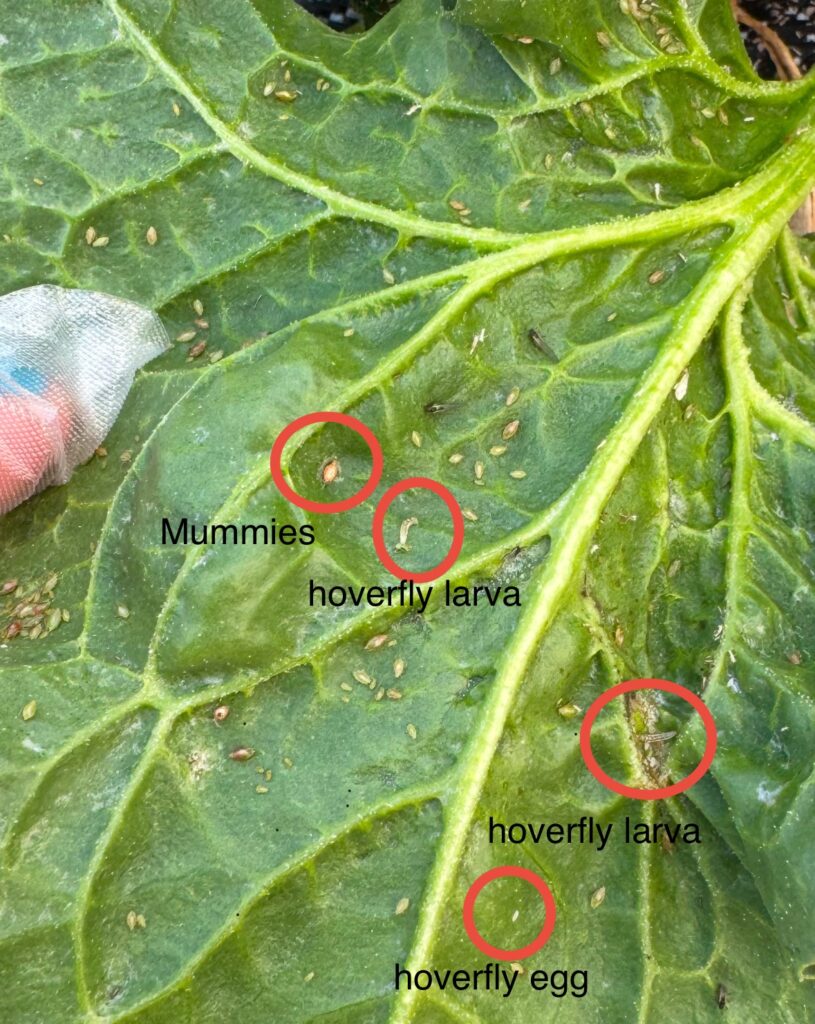As spring brings life back into our high tunnels, it also awakens more than just our crops. This year, our spinach beds became an early battleground in the age-old story between pests and their natural enemies. From the first warm days, we began spotting tiny green aphids clustering on young spinach leaves, sucking sap, and threatening tender growth. But we weren’t the only ones who noticed them; nature had already sent back up.
Along with the green, thriving aphids were mummies―aphid bodies that had turned brown and swollen, a clear sign that parasitoid wasps were at work. Shortly after, the real stars of the story arrived: syrphid flies (Figure 1). Also known as hoverflies, syrphids are often mistaken for bees. Their superpower lies not only in pollination (they help with that, too!) but in pest control. The species we’ve seen most often is Eupeodes americanus (Figure 2), a striking hoverfly with banded markings and a fierce appetite, at least in its larval stage. While adults hover among flowers, sipping nectar and helping with pollination, their larvae are busy hunting aphids.
And hunt they did. In some tunnels, aphids had exploded into large colonies, curling spinach leaves and weakening plants. Yet, within just a few weeks, the balance shifted. We began seeing fewer aphids, more mummies, and syrphid larvae actively feeding. In some tunnels, these natural enemies brought aphid numbers down to manageable levels, without us having to intervene.
What’s truly remarkable is how quickly this natural control kicked in. While chemical sprays may work fast, they don’t bring the long-term balance that beneficial insects do. Syrphids are a grower’s friend: they’re native, abundant, easy to encourage through the integration of flowers, and they do the job of managing aphids quietly.
So, if you’re seeing aphids in your spinach this spring, don’t panic—look closer. Do you see brown mummies? Are tiny maggots crawling near aphid clusters? Maybe you’ll spot a syrphid fly hovering near your flowers. These are signs that nature is already responding (Figure 3), and your job might just be to observe and let nature take its course.
In high tunnels, where enclosed spaces can shift pest dynamics, having syrphids active early in the season is a good sign. Keep track of what you see. Plant companion flowers, such as alyssum, to support adult syrphids, along with other beneficial insects, by providing nectar and pollen. This encourages them to stay nearby and continue to offer their pest management services.


